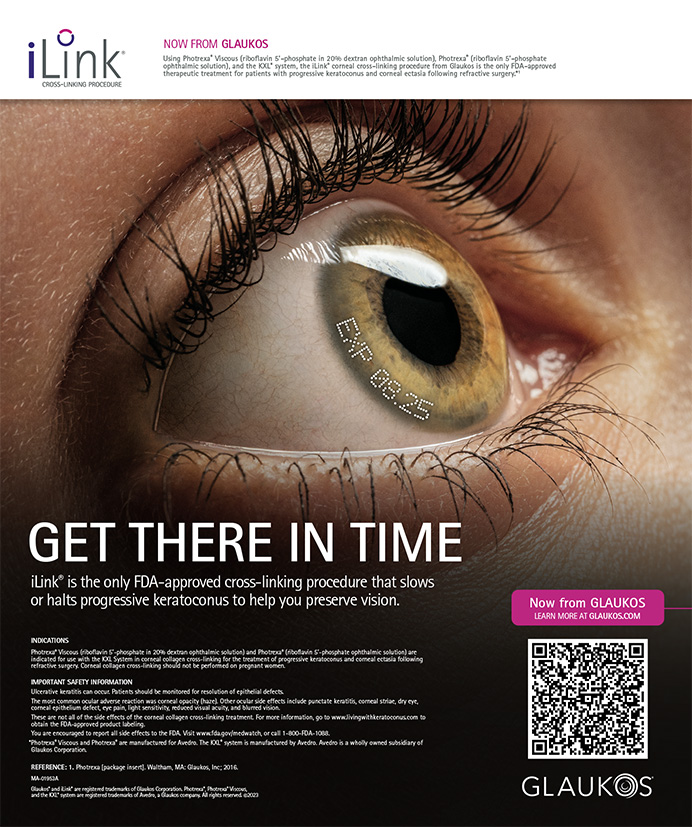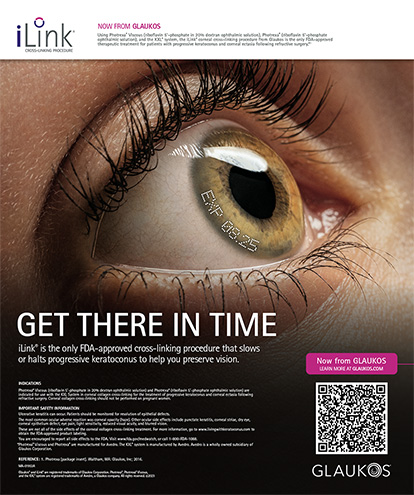Of all areas on the face, the eyes are arguably the most expressive. They are also the first place to which we we are drawn when looking at someone. These are some of the reasons why the ocular area has remained a hotbed of discussion and interest among cosmetic dermatologists for many years. However, despite consistently high interest in the ocular area, many physicians have been reluctant to treat it, due to the sensitivity of the area and the slim margin of error. But, with the explosion of cosmeceuticals and the approval of various cosmetic injectable agents, including the relatively recent approval of Botox (onabotulinumtoxinA; Allergan) for crow's feet, successful treatment of the ocular area has never been more within grasp.
TOXINS
Among the many considerations physicians should make when using toxins in the ocular area is that the duration of effect does not seem to be as long as in other areas. A dosing study with onabotulinumtoxinA in moderate to severe lateral canthal lines (crow's feet) showed that the responder rate dipped from nearly 50% after 30 days of treatment to just above 20% 120 days after treatment (data on file, Allergan). In addition to treating crow's feet, toxin can also be used in the brow directly. Injecting 2 units midway between the maximal arch and lateral brow edge will cause a slight but significant elevation of the lateral brow. Injecting a few units directly under the middle of the lower lash line will cause a slight rounding of the eye and increased scleral show. These advanced techniques are commonly employed to attain a more “open-eyed” appearance.
Adverse events with toxin in this region tend to be twofold. Novice injectors tend to chase lower crow's feet lines below the zygomatic arch, inadvertently causing a lid droop on the affected side. This untoward effect can last from 4 to 12 weeks. Equally unflattering is injecting too much toxin in the area directly above the zygoma, causing a shelf-like flattening of the area that is evident upon smiling. Patients will first notice this effect when they see photographs of themselves in a group.
Individuals that use their lower orbicularis muscle to elevate their cheeks should not receive toxin in this area.
FILLERS
Achieving success with fillers in the ocular area is also very technique dependent. It has the potential for excellent or disastrous results. Injecting hyaluronic acid directly in the supraperiosteal plane in line with the orbital rim can soften the hollow, making the medial and upper cheek appear fuller and the lid/cheek transition zone less obvious. Additionally, the “darkness” in the tear trough decreases, because the filling agent creates an increased distance for the underlying vasculature to reflect to the surface of the skin.
Smaller aliquots of filler can also be placed superficially in layers within the musculature of the orbicularis. Care to avoid the infraorbital neurovascular bundle is critical. Injecting in this area is best reserved for skilled physicians with a deep knowledge of facial anatomy.
Over time, the hyaluronic acid placed at different layers will be metabolized away at different rates, making the superficially placed product more obvious. This issue must be considered when planning the injection pattern at the office visit.
Product choice and patient selection are equally important when treating this delicate region of the face. Choose products with less of a humectant effect (ie, Belotero [Merz] or diluted Restylane [Medicis/ Valeant]) to decrease the likelihood of a Tyndall effect.
Patients who report periocular edema (“I wake up with puffy eyes”) are not good candidates for this procedure. Even a small amount of injected hyaluronic acid can cause significant fluid retention in this patient population that would need to be dissolved with hyaluronidase.
As more injectable agents become available, attention to the periocular area is likely to increase. This can be a direct or indirect effect. For instance, the introduction of Juvéderm Voluma XC (Allergan) onto the market in November 2013 was for treatment in the midface for cheek augmentation. But, interestingly, the FDA trials for Voluma showed that patients saw improvement in other areas of the face that did not receive treatment (data on file, Allergan). For instance, 32% of patients had a 1-point-or-greater improvement in the nasolabial fold severity scale 6 months after treatment. In addition, 53.6% of patients expressed moderate, very much, or complete satisfaction with their tear trough area. The improvement in these areas was likely from a lifting effect of the upper cheek, softening contours in adjacent regions of the face, including the lower eyelid region.
This study result highlights the importance of assessing the entire face, as treating one area can impact other regions of cosmetic importance.
DEVICES AND COSMECEUTICALS
Other modalities that have been used with varying success in the periocular area are device-based therapies. Fractional lasers are often the “go-to” device for hyperpigmentation and fine lines but occasionally can cause a worsening of pigment. Thermage and Ultherapy (Ulthera) are used frequently to tighten skin and help with fine lines. They are expensive, painful and time-consuming procedures but are wildly popular. They also have some degree of unpredictability. One of the difficulties in treating the periocular region with devices is that, in general, as procedures become more invasive, the potential for problems increases, because the eye area is so delicate. Most practitioners tend to perform multiple treatments at lower energy levels to avoid complications.
Often, my recommendations for addressing the eye area with topical therapy will depend on the patient's age. For individuals in their 20s and 30s, I tell them to wear sunglasses and to try and avoid squinting as much as possible to prevent wrinkling. In addition to sunscreen, I recommend a good humectant moisturizer for daily use. Some antioxidant-based moisturizers can be particularly beneficial for younger patients as well. Most products that are ideal for photodamage are intolerable for use in the periocular region. For example, alpha hydroxyl acids and topical retinoids (a dermatologist's gold standard in the anti-aging battle) are often too irritating, and very few patients will be willing to use them on a long-term basis.
Once the creases start (which can be as early as in the late 20s/early 30s in certain ethnic groups), you can begin talking to patients about the various injectable and device options available to them for improvement.
EYE OF THE BEHOLDER
Patients—women in particular—are increasingly noticing that wrinkles and signs of aging are affecting their eyes before other facial areas. Moreover, a broader public awareness of the importance of the eye area in the overall spectrum of beauty also appears to be growing. Thus, demand for treatment around the eyes has grown significantly in recent years. It is incumbent upon physicians to familiarize themselves with the expanding scope of ocular procedures and the challenges associated with them. Because the ocular area poses a different set of concerns than other areas of the face, a thorough knowledge of facial anatomy is critical to acheiving success.
This article is reprinted with permission from Practical Dermatology's March 2014 issue.
Dina N. Anderson, MD, is a board-certified dermatologist in private practice in New York City and a clinical instructor at Mt. Sinai School of Medicine.


